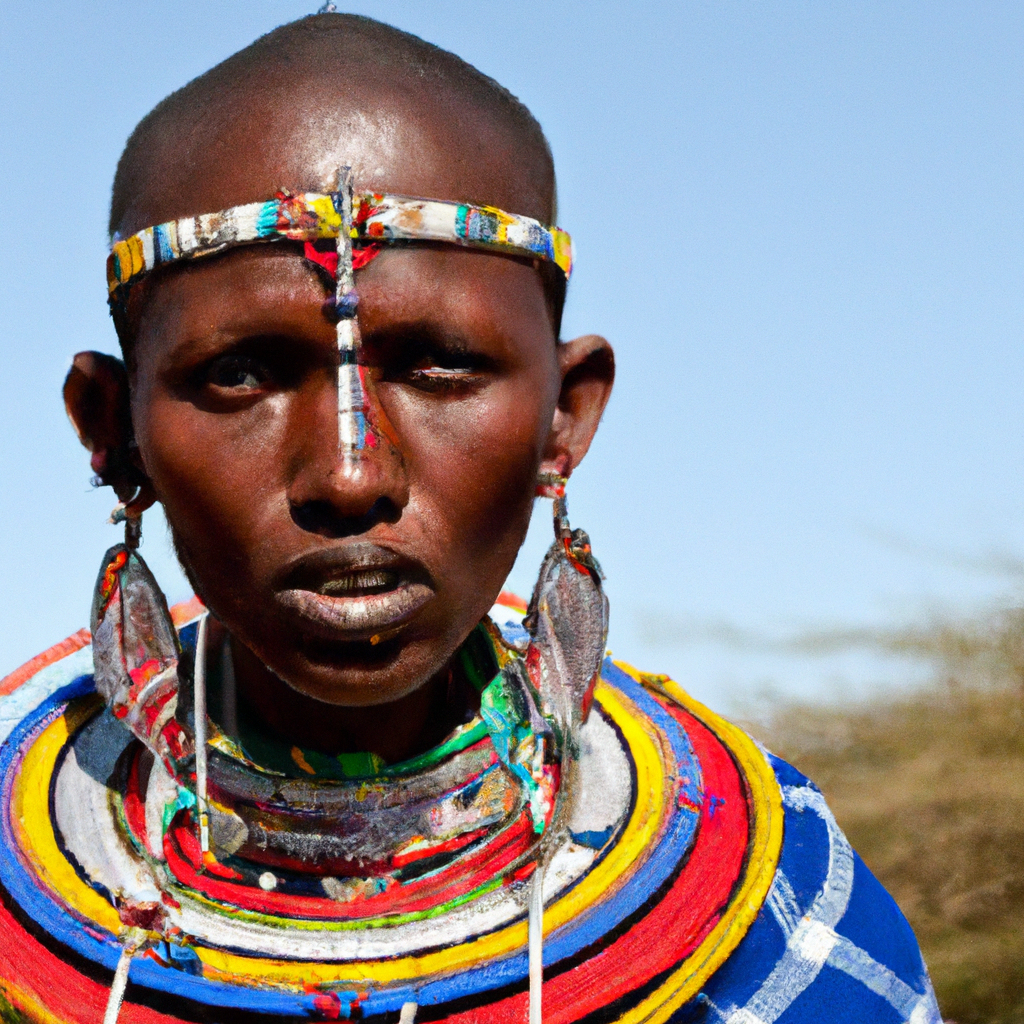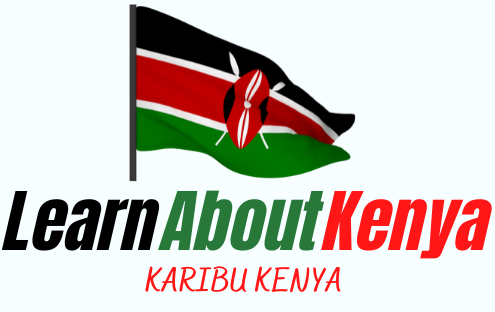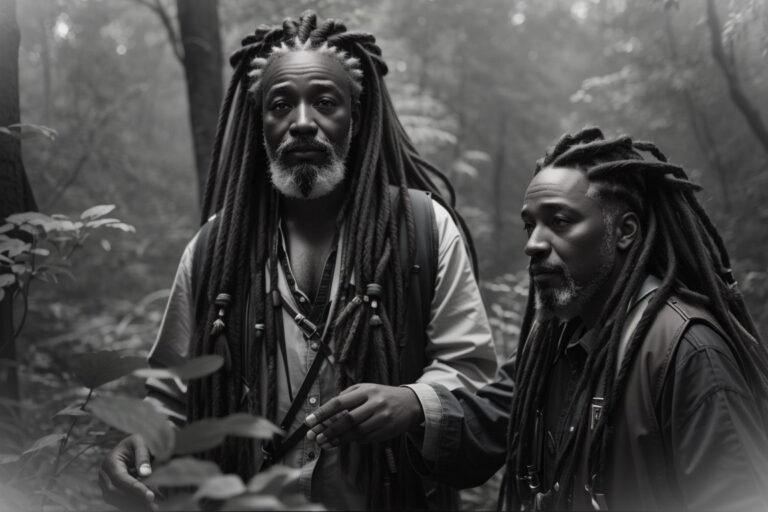Who Were The Indigenous Peoples Of Kenya?
Have you ever wondered about the indigenous peoples of Kenya? Curious to learn more about the rich and diverse cultures that have shaped this East African nation? In this article, we will explore the fascinating history and heritage of the indigenous peoples of Kenya, delving into their traditions, languages, and customs, and gaining a deeper appreciation for their contributions to the country’s vibrant tapestry of cultures. So, grab a cup of tea and join us on this journey as we uncover the untold stories of Kenya’s indigenous peoples.

Introduction
Kenya, a country rich in history and culture, is home to diverse ethnic groups and indigenous communities. From the early settlements of hunter-gatherer communities to the arrival of Bantu migrants and the emergence of Nilotic groups, Kenya’s population is a tapestry of different cultures and customs. In this article, we will explore the history and heritage of these major ethnic groups, as well as the distinctive cultures and customs that have shaped Kenya’s identity. We will also discuss the impact of colonial rule on these communities and the current challenges they face, as well as the efforts being made to preserve and revitalize their cultural heritage.
Early Settlements in Kenya
Hunter-Gatherer Communities
Before the arrival of Bantu migrants and Nilotic groups, Kenya was inhabited by hunter-gatherer communities. These indigenous peoples lived off the land, relying on hunting, fishing, and gathering wild fruits and vegetables for sustenance. Among these communities were the Ogiek and the Sengwer, who have a deep connection to the forests and mountains of Kenya. They have rich cultural traditions and a unique way of life that has been intricately tied to their environment for generations.
Bantu Migration
The Bantu migration, which occurred over several centuries, brought a new wave of settlers to Kenya. The Bantu people, originating from what is now Nigeria and Cameroon, gradually migrated eastwards, spreading their language and culture across the African continent. In Kenya, the Bantu migration led to the establishment of several major ethnic groups, including the Kikuyu, Luhya, Kamba, Kisii, and Meru.
Nilotic Groups
Another significant wave of migration in Kenya’s history saw the arrival of Nilotic groups from Sudan and Ethiopia. The Nilotic people, such as the Luo, Kalenjin, Maasai, and Turkana, brought with them their own unique languages, traditions, and ways of life. These communities often settled in areas that were favorable for cattle herding, taking advantage of the fertile lands and abundant pastures found in different regions of Kenya.
Major Ethnic Groups
Throughout Kenya, various ethnic groups have emerged as the major pillars of the country’s cultural identity. These groups play a significant role in shaping Kenya’s history, traditions, and societal structure. Let’s explore some of these major ethnic groups:
Kikuyu
The Kikuyu, the largest ethnic group in Kenya, are primarily concentrated in the Central Highlands region. They have a rich agricultural heritage and are known for their ability to cultivate the land. The Kikuyu community values education, entrepreneurship, and community cohesion. Their vibrant culture is reflected in their music, dance, and traditional ceremonies, such as weddings and initiation rituals.
Luo
The Luo people reside predominantly in western Kenya, along the shores of Lake Victoria. They have a distinct artistic and musical tradition, including their renowned benga music, which has gained popularity both regionally and internationally. The Luo community is known for its emphasis on education, political activism, and their strong tribal bonds.
Luhya
The Luhya ethnic group, spread across western Kenya, is composed of several subgroups with distinct languages and customs. Known for their farming skills, the Luhya people have a rich heritage of music, storytelling, and crafts. They have made significant contributions to Kenyan politics, sports, and academia.
Kalenjin
The Kalenjin community primarily inhabits the Rift Valley region of Kenya. Renowned for their athletic prowess, the Kalenjin people have produced numerous world-class long-distance runners. They have a strong emphasis on agriculture, particularly in the production of maize and other grains. The Kalenjin culture places great value on community cooperation and has a rich oral tradition.
Kamba
The Kamba people reside primarily in the eastern part of Kenya. They are known for their expertise in crafts, including wood carving and basket weaving. The Kamba people have a deep spiritual belief system and perform traditional rituals to appease their ancestral spirits. Music and dance play a significant role in Kamba culture, with the mbuta dance being a popular traditional form of expression.
Meru
The Meru people inhabit the eastern slopes of Mount Kenya. They have a rich agricultural tradition and are skilled in cultivation and animal husbandry. The Meru community is known for its musical traditions, with the accompanied drumming and dancing being integral to their cultural celebrations. They also have a strong sense of solidarity and communal cooperation.
Kisii
The Kisii people are clustered in the southwestern part of Kenya. They are known for their skilled craftsmanship in pottery and soapstone carving. The Kisii community places high value on education and has a strong work ethic. They have unique cultural practices, such as the Isikuti dance, which is a distinctive part of their heritage.
Mijikenda
The Mijikenda, a group of nine sub-tribes, inhabit the coastal region of Kenya. They have a rich cultural heritage and are known for their intricate wood carvings, traditional dances, and elaborate initiation ceremonies. The Mijikenda community has a strong social structure and places great importance on communal unity and cooperation.
Turkana
The Turkana people reside in the arid northern part of Kenya. They are traditionally pastoralists, relying on livestock for their livelihood. The Turkana are known for their vibrant beadwork and distinctive hairstyles. They have a rich oral tradition, with storytelling being a vital part of their culture.
Maasai
The Maasai, one of the most well-known ethnic groups in Africa, reside in the southern part of Kenya. Renowned for their distinctive clothing, intricate beadwork, and warrior traditions, the Maasai people have managed to preserve their cultural identity despite external influences. Cattle herding and a semi-nomadic lifestyle are integral to Maasai traditions.

Hunter-Gatherer Communities
The Ogiek
The Ogiek, one of the hunter-gatherer communities in Kenya, have inhabited the Mau Forest for centuries. They have a deep spiritual connection to their forest home and have traditionally relied on hunting, gathering, and honey harvesting for their sustenance. The Ogiek people have a strong sense of community and are known for their unique knowledge of their forest environment.
The Sengwer
The Sengwer are another hunter-gatherer community who have lived in the Cherangani Hills for generations. They have a rich tradition of basket weaving and have honed their skills in the sustainable use of forest resources. The Sengwer people have faced challenges in recent years due to land disputes and the encroachment of their traditional lands.
Bantu Migration
Kikuyu
The Kikuyu people trace their origins back to the Bantu migration in Kenya. They arrived in the Central Highlands region, where they established one of the largest ethnic groups in the country. The Kikuyu have a complex social structure, with age sets playing a significant role in their societal organization. They have traditionally been agriculturalists, cultivating crops such as maize, beans, and potatoes.
Luhya
The Luhya ethnic group is also a product of the Bantu migration. They have settled in western Kenya, where they have developed a diverse range of subgroups with distinct cultural identities. The Luhya people are primarily agriculturalists, engaging in farming activities such as growing maize, millet, and sweet potatoes. They have a unique initiation ceremony known as “ingoho,” which marks the transition to adulthood.
Kamba
The Kamba people trace their roots back to the Bantu migration and settled in eastern Kenya. They have a rich cultural heritage, heavily influenced by their proximity to the coast, and are known for their stunning crafts, including wood carving and basket weaving. The Kamba community has historically relied on farming, particularly the cultivation of drought-resistant crops such as millet, sorghum, and yams.
Kisii
The Kisii people are another ethnic group that emerged from the Bantu migration. They inhabit the southwestern part of Kenya and have cultivated a thriving agricultural economy. The Kisii community is known for their skill in pottery and soapstone carving, which has been passed down through generations. They place great value on education and have a strong work ethic.
Meru
The Meru people also have their roots in the Bantu migration and have settled in the eastern slopes of Mount Kenya. They have a deep connection to the land and are skilled in agriculture, particularly in growing crops like coffee, tea, and bananas. The Meru have a rich musical tradition, with drumming and dancing being integral to their cultural celebrations.
Nilotic Groups
Luo
The Luo people are part of the Nilotic group and have traditionally resided along the shores of Lake Victoria. They have a rich cultural heritage, with music and dance playing an essential role in their traditions. The Luo community has produced renowned musicians, including the late Ayub Ogada and the globally recognized musician, Ayub Ogada. Politically active, the Luo people have played a significant role in Kenyan politics.
Kalenjin
The Kalenjin community, another Nilotic group, is primarily found in the Rift Valley region. Known for their athletic prowess, the Kalenjin people have produced numerous long-distance runners who have achieved success on the world stage. They have a rich oral tradition, with storytelling being an integral part of their culture.
Maasai
The Maasai people are one of the most well-known Nilotic groups in Africa. They are predominantly found in the southern part of Kenya. The Maasai are renowned for their distinctive clothing, intricate beadwork, and warrior traditions. Cattle herding is an integral part of Maasai culture, and their close bond with their livestock is deeply ingrained in their way of life.
Turkana
The Turkana people, residing in the arid northern part of Kenya, are traditionally pastoralists. They rely on livestock for sustenance and have developed a deep understanding of their harsh environment. The Turkana are known for their vibrant beadwork and unique hairstyles. They have a rich oral tradition, with storytelling playing a vital role in preserving their cultural heritage.
Distinct Cultures and Customs
Kikuyu Culture
The Kikuyu culture is deeply rooted in their agricultural heritage. They have a strong emphasis on education and have produced many scholars and professionals. The Kikuyu people value community cohesion and have various traditional ceremonies, such as weddings and initiation rituals. Their music and dance, characterized by rhythmic beats and energetic movements, are an integral part of their cultural celebrations.
Luo Culture
The Luo people have a vibrant artistic and musical tradition. Benga music, a genre originating from their community, has gained popularity locally and internationally. The Luo community places great importance on education and has a strong emphasis on political activism. Family and tribal bonds are highly valued, and rituals, such as the Doho dance and the social institution of “jak nitie” (helping each other), are central to their culture.
Luhya Culture
The Luhya culture is diverse, with each subgroup having its distinct customs and traditions. They have a rich heritage of music, storytelling, and crafts. The Luhya people are known for their agricultural expertise, and their farming practices are deeply rooted in their cultural identity. Their traditional ceremonies, such as the circumcision rituals for boys and girls, play a significant role in their community.
Kalenjin Culture
The Kalenjin people have a strong emphasis on community cooperation and solidarity. They have a rich oral tradition, with storytelling and oral history being vital in passing down their cultural heritage. The Kalenjin culture is deeply connected to their agricultural practices, particularly the cultivation of maize and other grains. Traditional dances, such as the “Chepdong” and “Sambut,” are performed during their celebrations.
Kamba Culture
The Kamba people have a unique cultural identity influenced by their proximity to the coastal region. They are known for their skilled craftsmanship in wood carving and basket weaving. The Kamba community has a deep spiritual belief system and performs traditional rituals to appease their ancestral spirits. Music and dance, including the mbuta dance, are integral to Kamba culture and are showcased during their various ceremonies and celebrations.
Meru Culture
The Meru people have a deep connection to the land and are highly skilled in agriculture. Their cultural celebrations often revolve around the cultivation of food crops, such as bananas, coffee, and tea. Drumming and dancing are integral to their cultural ceremonies and are performed during occasions like weddings and initiation rituals. The Meru people also have a strong sense of solidarity and communal cooperation.
Kisii Culture
The Kisii people have a rich cultural heritage in the southwestern part of Kenya. They are known for their skilled craftsmanship in pottery and soapstone carving. The Kisii community places high value on education, and education is seen as a pathway to success and social mobility. Traditional ceremonies, such as the “Kwambio” (circumcision) for boys and “Ekerende” for girls, are important milestones in their culture.
Mijikenda Culture
The Mijikenda community is known for its intricate wood carvings, traditional dances, and elaborate initiation ceremonies. They have a strong social structure, valuing communal unity and cooperation. The Mijikenda people have a rich musical tradition, with various instruments playing a vital role in their cultural expressions. Their vibrant culture is showcased in their artistic creations and performances.
Turkana Culture
The Turkana people, adapting to their arid environment, have a unique cultural identity. They rely primarily on pastoralism, herding livestock for their livelihood. Vibrant beadwork and distinctive hairstyles are prominent features of Turkana culture. They have a rich oral tradition, with storytelling being a vital means of preserving their customs and passing down knowledge through generations.
Maasai Culture
The Maasai people, renowned for their distinctive clothing and intricate beadwork, continue to preserve their cultural heritage. Their semi-nomadic lifestyle and deep connection to cattle herding are central to their way of life. Traditional ceremonies, such as the “Eunoto” and “Emuratare,” mark important milestones in Maasai culture. The Maasai people have managed to maintain their unique customs and traditions despite external influences.
Impact of Colonial Rule
Land Dispossession
One of the significant impacts of colonial rule in Kenya was the dispossession of land from indigenous communities. Under the British colonial rule, large tracts of land were forcefully taken away from local communities, leading to the loss of ancestral lands and displacement of many indigenous peoples. This land dispossession had far-reaching effects on the social, cultural, and economic fabric of these communities, disrupting their traditional way of life and connection to their homelands.
Cultural Suppression
Colonial rule also had a significant impact on the cultural identity of indigenous communities in Kenya. The British colonizers sought to impose their own societal norms, values, and institutions, often suppressing and devaluing the cultural practices and traditions of indigenous peoples. Local languages were marginalized, traditional rituals were discouraged or prohibited, and indigenous knowledge systems were undermined. As a result, many communities faced cultural erasure and the loss of their unique heritage.
Current Challenges and Preservation Efforts
Land Rights and Disputes
One of the ongoing challenges faced by indigenous communities in Kenya is the issue of land rights and disputes. Many communities continue to face threats to their ancestral lands, often due to large-scale development projects, commercial agriculture, and government policies. These land disputes negatively impact the wellbeing and livelihoods of indigenous peoples, who rely on their traditional lands for sustenance and cultural practices. Efforts are being made by indigenous rights organizations and legal advocacy groups to ensure the recognition and protection of the land rights of these communities.
Cultural Revitalization
To overcome the challenges posed by historical marginalization and cultural suppression, indigenous communities in Kenya are actively engaged in efforts to revitalize and preserve their cultural heritage. Cultural festivals, language revitalization programs, and cultural exchange initiatives are being implemented to celebrate and promote the traditional practices, languages, and art forms of these communities. Indigenous organizations and community leaders are also advocating for the integration of indigenous knowledge systems and practices into formal education and governance structures.
Conclusion
Kenya’s rich cultural diversity is a testament to the history, heritage, and resilience of its indigenous communities and major ethnic groups. From the early settlements of hunter-gatherer communities to the migration of Bantu and Nilotic groups, Kenya’s population is characterized by a vibrant tapestry of cultures and customs. Despite the challenges posed by colonial rule and ongoing land rights disputes, indigenous communities in Kenya are actively working to revitalize and preserve their cultural heritage. Through community-led initiatives, education, and advocacy, these communities are celebrating their unique traditions and paving the way for a future that honors and cherishes Kenya’s diverse cultural identity.






